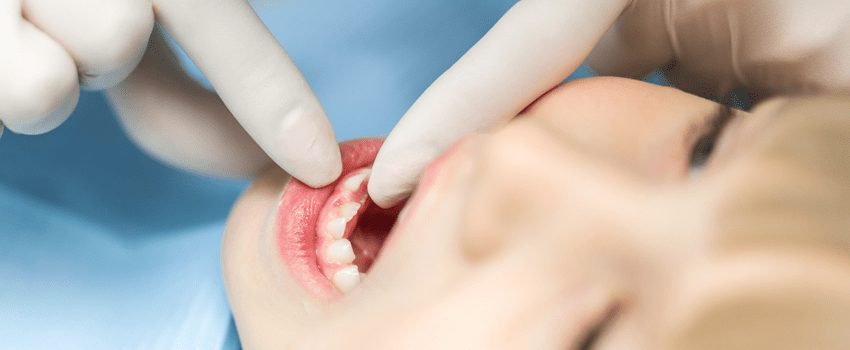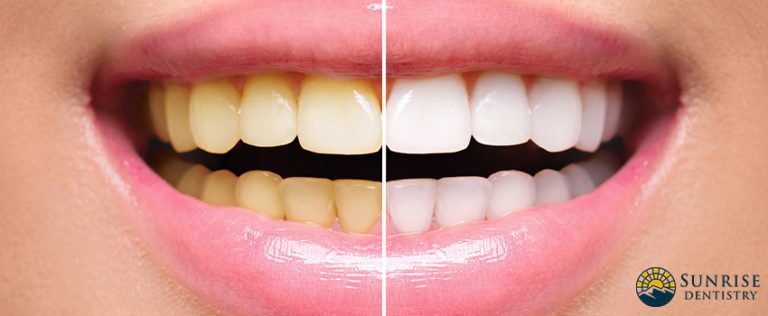Many years ago there were not many options to replace missing teeth. George Washington was plagued with dental issues most of his life. If you Google ‘George Washington wooden teeth’ you will see all kinds of stories and even pictures of the dentures that George Washington wore (you can actually view the only known set of Washington’s dentures at a museum in Mount Vernon Washington). Contrary to popular belief that his teeth were made of wood, his dentures were made up of human teeth, several different metal alloys, Ivory (suspected to be from elephants) and maybe even teeth from cows and horses.
Fortunately for us, in this day and age, there are really safe and long-lasting and attractive materials that can make up for ailing and missing teeth. The information here is designed to help you decide what option is best for you and will hopefully explain in laymen’s terms the differences between each option and the pros and cons of each. Dr. Strietzel will help guide you through the process of deciding what the best option is for your situation. It is important to discuss the options with your dentist as your dentist brings a wealth of wisdom and understanding and knows what kinds of prosthetics will best suit the conditions of your teeth, bone, and gums.
When you have teeth extracted it creates changes in your mouth. While in some cases these changes have minimal effects, in most cases areas of missing teeth can create complications to the teeth that were near the extracted tooth as well as the bone around it. Following are a few of the complications:
- Bone Loss: When a tooth is lost, the bone tissue that is under it begins to weaken. This can lead to a misaligned jaw and functional issues with the jaw.
- Teeth shifting: When teeth shift it changes the bite. It changes the way your top teeth meet your bottom teeth, which could potentially create a harder contact where the surfaces come together. The problem with this is if teeth are hitting too hard it causes repetitive trauma to the teeth involved and may result in an abscess forming, which could lead to a root canal or another extraction in order to mitigate the infection. Repeated trauma to a tooth is never a good thing.
- Missing teeth that are not replaced can eventually change the bone structure of the face.
- Aesthetics: depending on where the missing tooth is located, we may be inclined to not smile (or even laugh) or we might talk with our hand in front of our face because, let’s face it, for most, it is embarrassing for people to see us missing teeth. We wonder what other people think instead of flashing our awesome smile at them.
Replacing missing teeth
Following are the options for replacing missing teeth
- Implants: Replace the missing tooth with an implant. There is significant expense with this option and it is a fairly drawn-out process. In the end, you will have a new “tooth” that looks and functions just like a real tooth. If you want to choose this option, Dr. Strietzel will want to get an x-ray of your jaw to ensure that your bone tissue is healthy and strong enough to tolerate an implant. A dental implant can fail if the bone tissue is not strong enough. If it is acceptable, the assistant will then make an impression of the jaw to aid in determining placement. Our office refers to the actual implant placement to an oral surgeon or a prosthodontist. Once the implant is placed, you will need to allow it to heal for several months until the surgeon reports that the area has healed well and you are ready for the restorative phase, the placement of a crown and an abutment which secures the crown to the implant, that we will do in our office. This phase usually takes about 3 weeks between taking the impression and getting the restorations back from the lab. Implants can also be placed to support a bridge to replace multiple missing teeth in a row.We used to expect implants to last forever, but today we know they, like most anything else, do have a life expectancy. There are many factors involved in how long they last and a range of 8-20 years is often used. Talk with your dentist about your specific situation and what a reasonable implant life expectancy for you is. Many would be in the 12-15 year range.
- Fixed Bridge (also called a fixed partial denture): If implants are not an option for you, a fixed bridge might be your next choice. A fixed bridge is when two existing teeth serve as an anchor for one or more teeth that are missing in between the two existing teeth. A mold is taken of the area to have crowns made for each of the two existing teeth on either side of the missing tooth or teeth. The replacement teeth are placed between the two crowns, creating a bridge. The bridge is then cemented into place. Bridges have a life expectancy that is similar to an implant if the teeth used for support are strong. The disadvantage to this option compared to an implant are:
1) You need to remove significant tooth structure (mostly enamel) from both adjacent teeth.
2) All three or more are attached together and it is a little more involved to floss that area.
3) In the future, if you develop decay or other problems you need to address, you will have to replace all three or more attached teeth.
- Flipper: A flipper is meant to serve as a temporary replacement for one or more anterior (front) teeth. It either sits in the upper palate or the lower jaw depending on the location of the missing teeth. Many people choose to use this temporary partial as a permanent partial. We don’t recommend this, as temporary’s break easily as they are not meant to last. Consider the long term financial implications of replacing or repairing a broken flipper over and over.
- Removable Partial: A removable partial denture may be an option if implants and bridges are not an option. If you don’t have enough quantity or quality of bone for an implant or If the remaining anchor teeth in the mouth are not strong enough to support a bridge, then the removable partial is likely the best option. Impressions are taken and sent to a lab for the part to be made. The dental assistant will make adjustments as needed and for the comfort of the patient.
The disadvantages to this option are:
1) It is removable and therefore can move during function, which causes rubbing and soreness.
2) It must be removed and cleaned regularly
3) They do not tend to last as long as a bridge or implant
4) Most people strongly prefer something fixed.
The main advantage to this option is they do cost less, especially when you are missing multiple teeth in one arch (upper jaw or lower jaw)
- Fixed or Removable Dentures: If you are missing all your upper and/or lower teeth, then a full denture may be your option. In the fixed option, several implants are placed in the jawbone (which helps to keep the bone tissue strong as well as provide a base for the denture). Impressions are made after the gums have healed and a bridge is made and then permanently affixed to the implants. In a removable denture, two or more implants are fitted with small locator devices that line up with the implants so the denture can snap in and out of the mouth. If a patient is unable to have implants due to cost or condition of the bone tissue, impressions are made for dentures that are meant to fit snuggly along the gumline. For additional gripping, denture adhesives, such as poligrip, can be used to help prevent food from getting under the denture and increase the stability of the hold.
As mentioned above, implants help maintain the jawbone in addition to resisting movement left to right, front to back and up and down.





